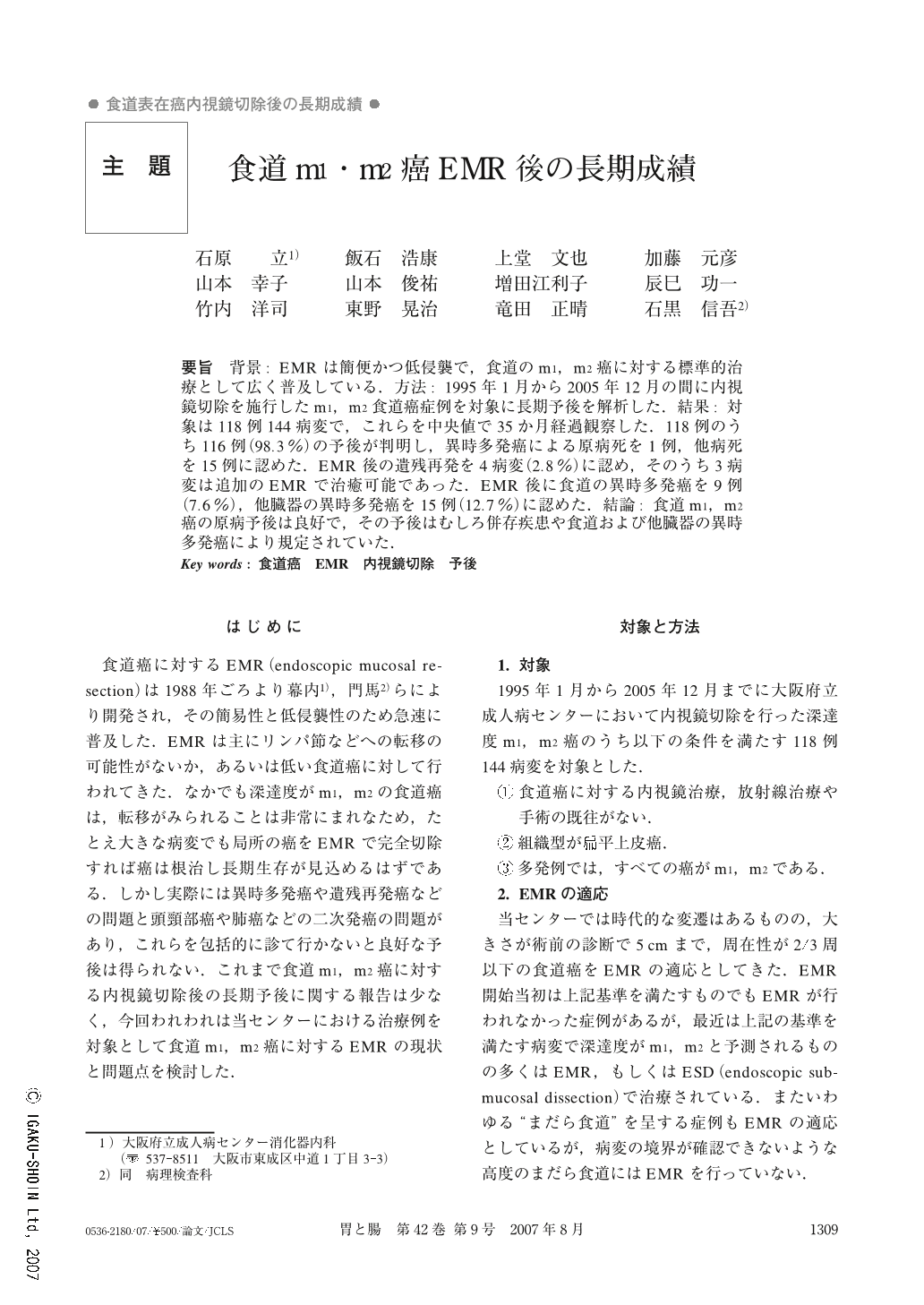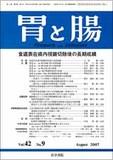Japanese
English
- 有料閲覧
- Abstract 文献概要
- 1ページ目 Look Inside
- 参考文献 Reference
- サイト内被引用 Cited by
要旨 背景:EMRは簡便かつ低侵襲で,食道のm1,m2癌に対する標準的治療として広く普及している.方法:1995年1月から2005年12月の間に内視鏡切除を施行したm1,m2食道癌症例を対象に長期予後を解析した.結果:対象は118例144病変で,これらを中央値で35か月経過観察した.118例のうち116例(98.3%)の予後が判明し,異時多発癌による原病死を1例,他病死を15例に認めた.EMR後の遺残再発を4病変(2.8%)に認め,そのうち3病変は追加のEMRで治癒可能であった.EMR後に食道の異時多発癌を9例(7.6%),他臓器の異時多発癌を15例(12.7%)に認めた.結論:食道m1,m2癌の原病予後は良好で,その予後はむしろ併存疾患や食道および他臓器の異時多発癌により規定されていた.
Background: EMR is a widely used method for early esophageal cancer. However, its long-term outcomes have not been fully evaluated. Method: Patients with m1 or m2 esophageal squamous cell carcinoma treated by EMR between 1995 and 2005 at our hospital were retrospectively analyzed for their long-time survival.
Results: One hundred and eighteen patients with 144 lesions were treated by EMR. The prognoses of 116 (98.3%) out of 118 patients were confirmed. One patient died of metachronous esophageal cancer, and 15 patients died of other diseases. Rate of local recurrence after EMR was 2.8% (4/144). Metachronous esophageal cancers were found in 9 cases (7.6%) and other organ cancers were found in 15 cases (12.7%) after EMR.
Conclusion: Cause-specific survival of patients with m1 and m2 esophageal squamous cell carcinoma was good. Their prognoses were mainly defined by synchronous and metachronous cancers.

Copyright © 2007, Igaku-Shoin Ltd. All rights reserved.


